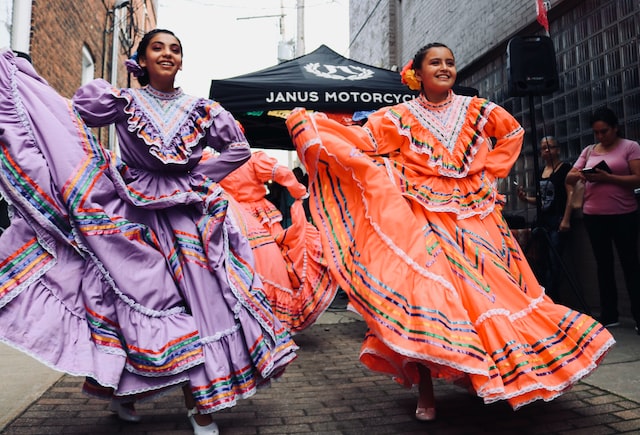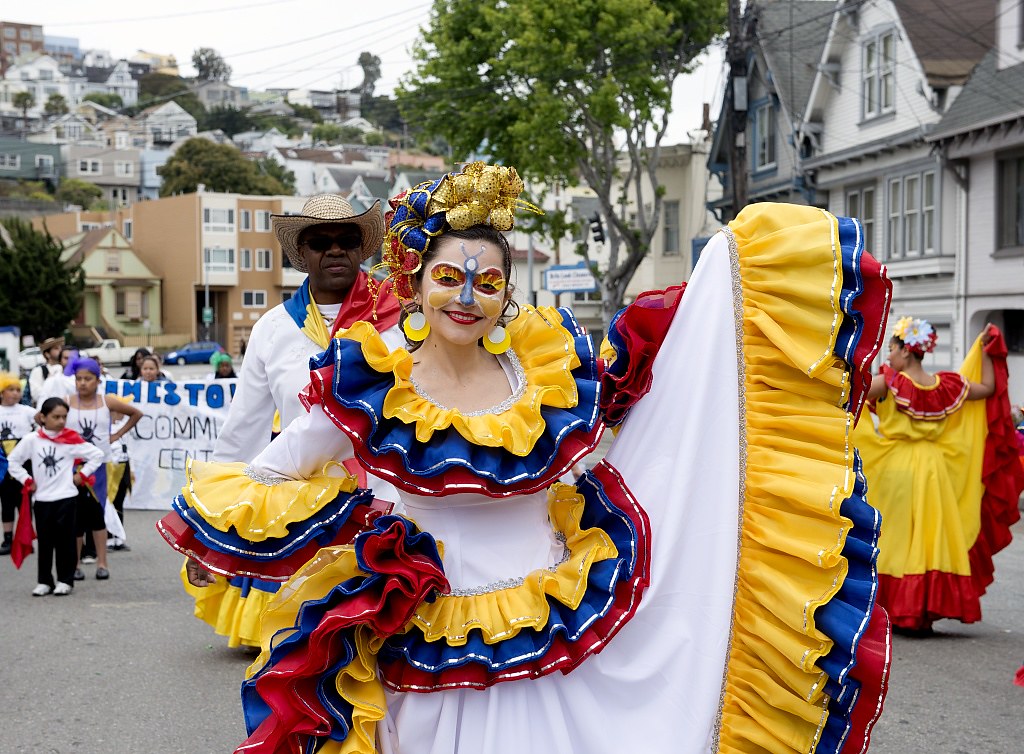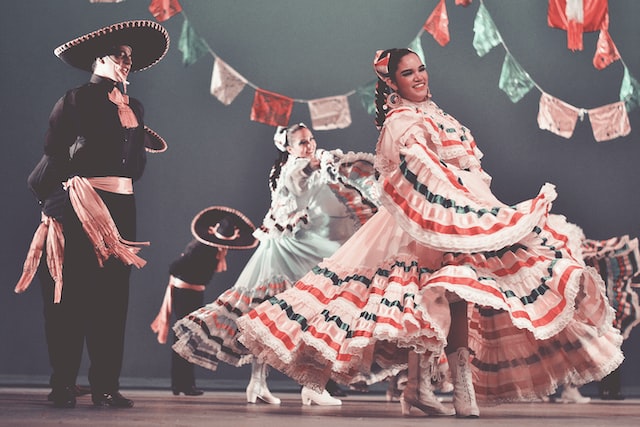Hispanic Heritage Month Facts for Kids [2024 Updated]
Hispanic Heritage Month, a fantastic festival, is observed in the United States annually. As Spanish teachers, bilingual parents, or families with children learning Spanish as a second language, we celebrate Hispanic history all year round. However, we have this month to increase our understanding of the achievements made by other Hispanic writers, politicians, artists, athletes, and innovators. During National Hispanic Heritage Month, people honor the accomplishments made by the Hispanic and Latinx communities throughout our nation’s history.
In this article, we will be sharing some interesting facts about the Hispanic Heritage Month for kids.

Why Hispanic Heritage Month?
- One of the many amazing things about the U.S. is how many other civilizations have immigrated here and shaped its culture. Access to the nation’s wide variety of cuisines is just one advantage.
- The U.S. government has established several heritage months wherein we, as a country, pay homage to an ethnic or nationalist group that has profoundly influenced contemporary American society to honor this history.
- There are several of these heritage months, but one, in particular, stands out for its capacity to bring Americans together.
- An annual national celebration of Hispanic Heritage Month honors the contributions that Hispanics from Spain, Central America, South America, and the Caribbean have made to American history and culture.
- Remember that before 1848, regions like the American Southwest were formerly a part of Latin America. However, Hispanic Heritage Month is a celebration that unites all Americans and transcends national boundaries.
Important events during Hispanic Heritage Month
- Some of the events include festivals, concerts, movie screenings, and exhibits. The El Barrio Latin Jazz Festival takes place in the Bronx, New York, from September 15th to September 25th.
- On October 12th, formerly known as Columbus Day, Mexicans celebrate Race Day on the second part of Hispanic Heritage Month. Race Day, or Da de la Raza, honors Mexico’s “mixed indigenous and European roots.”
- The culmination of the celebration on October 15th also occurs just two weeks before Mexico’s Dia de Muertos, better known as Day of the Dead, which is observed on November 1st and November 2nd.
- Hispanic dance performances and displays are held annually at the National Museum of American History.
- During this time, the Annual Latino Music Festival takes place in Chicago.
Hispanic celebrities
- One of only two Hispanics in the Senate, Mel Martinez is the first Cuban-American senator. Additionally, he worked for former President George W. Bush as his secretary of housing.
- Famous journalists and authors include Geraldo Rivera, Gary Soto, Sandra Cisneros, Julia Alvarez, and Isabel Allende.
- Lynda Carter, Cameron Diaz, Emilio Estevez, America Ferrera, Salma Hayek, Jennifer Lopez, Anthony Quinn, and Charlie Sheen are a few actors from Hollywood.
- Among the well-known singers of Hispanic descent are Rita Moreno, Ricky Martin, Christina Aguilera, Gloria Estefan, Selena Gomez, and Gloria Estefan.
- Sports legends with Hispanic ancestry include Oscar De La Hoya, Roberto Alomar, Jose Canseco, Scott Gomez, Pedro Martinez, and Nancy Lopez.
Avoid these mistakes when observing Hispanic Heritage Month:
- Avoid perpetuating stereotypes: The mainstream representation of Hispanic/Latinx culture has been heavily Americanized and whitewashed. Contrary to popular belief, Latinos don’t consume crunchy tacos stuffed with lettuce and cheese; the real deal looks quite different. Most people don’t frequently wear scrapes or sombreros. They enjoy music other than salsa, and great Latino artists like Pablo Picasso and Selena aren’t the only ones. Push past the prejudices and seek new information rather than sticking to what you already know.
- Don’t be satisfied; a month is insufficient: We like to portray “heritage months” as an occasion to celebrate variety and inclusivity. However, if our culture truly valued inclusivity, we wouldn’t require a month to serve as a reminder for us to discuss the individuals we frequently overlook and forget. We shouldn’t need a specific month to draw attention to our group. It should be practiced consistently in popular textbooks, media, and culture.
- It’s about celebrating people, not purchasing goods: Don’t just remember to do it when the calendar prompts you to. Try it each day. Try to support genuine individuals with your purchases, such as the neighborhood Latino Bakery or Grocery Store, rather than building your celebration around Coronas, El Paso items, and Disney’s Coco. Better still, focus on meeting new people and forming friendships rather than making purchases.
Guidelines for honoring Hispanic Heritage Month include:
At school:
- Study books.
- Study Spanish
- Playing music
- Watch films that explore Latin American culture and life.
- Take up dancing
- Build crafts
- Make a bulletin board for Hispanic Heritage Month.
- Adorn the classroom.
At home:
- Visit a festival of culture
- Visit an authentic eatery.
- Visit a museum
At work:
- Install a display
- Hire a speaker
- Visit a neighborhood Latino restaurant for lunch.
- Organize a fundraising event for the workplace.
- Feel the joy virtually
Fun Hispanic Heritage Month Facts For Kids
A whole month for the festival, YAY!!!
It runs from September 15th to October 15th each year. It was initially intended for the Hispanic heritage celebration to run for a week. In 1968, Hispanic Heritage Week was launched by President Lyndon Johnson. This name was changed to Hispanic Heritage Month under President Ronald Reagan. Since then, the event has always been celebrated for 30 days each year.
Hispanic Heritage Month is divided into October and September.
You might be wondering why those dates now that we know how they evolved into the month-long celebration we know today. These dates fall on national holidays in Central and South American nations. Chile’s Independence Day is also observed on September 18th, whereas Mexico’s is celebrated on September 16th.

Hispanic Heritage Month is also referred to as Latinx Heritage Month.
Although Latino and Hispanic are frequently used interchangeably, they have different connotations. In a nutshell, Latino refers to people from countries in Latin America, and Hispanic refers to those from Spanish-speaking countries. As a result, there is some ambiguity regarding what Hispanic Heritage Month honors. According to the name, it is a month dedicated to celebrating Spanish-speaking people. To make the month more inclusive, there has recently been a drive to rebrand it. By renaming it Latinx Heritage Month, the focus might be expanded to include Latin American nations that don’t speak Spanish, like Brazil. The inclusion of Latinos of African heritage would increase.
It plays a vital role in teaching young Hispanics about their culture.
This month celebrates Hispanics’ cultural legacy and gives their community a place to display their original art, cuisine, languages, rituals, and traditions. This month is vital for adults as well as for kids.
Young Hispanic children get a taste of their culture through occasions like this. It acts as their entry point to reconnect with their roots. They can develop a strong sense of cultural identification and respect for their roots with the accurate portrayal.
Hispanic Heritage Month celebrates the honor of Seven Hispanic nations’ independence.
Beginning on September 15th, Hispanic Heritage Month celebrates the independence of Mexico, Chile, Costa Rica, El Salvador, Guatemala, Honduras, and Nicaragua.
Most young Hispanics don’t speak Spanish.
Spanish illiteracy among Hispanic Americans is rising. That’s also okay! Speaking Spanish in no way diminishes your Hispanic identity. There are many ways to respect culture (food, music, dance, holidays, clothes, movies, and traditions). Every culture has aspects that extend beyond its language. And because there are so many Hispanic nations, it’s important to remember that various ways to honor Hispanic culture exist.

Most Hispanics have mixed ancestry.
And that’s what makes Hispanic culture so lovely. There are 21 countries worldwide that speak Spanish. Add to it the blending of cultures experienced by those of mixed ancestries, such as those who are Spanish, Ecuadorian, Colombian, and Puerto Rican, or Dominican and Puerto Rican. So, there are many ways to be a Hispanic. For the almost 60 million Hispanic Americans, it implies diverse music, terminology, customs, food, and traditions.
Some guidelines were developed for Hispanic Heritage Month by the Law Library of Congress.
The Law Library of Congress has developed guides for commemorative events, including a thorough list of public laws, presidential proclamations, and congressional resolutions connected to National Hispanic Heritage Month.
The US census has used the term Hispanic since 1980.
The American government initially used the term “Hispanic” in the early 1970s, and the U.S. Census has used it since 1980. 132.8 million Hispanic people are expected to live in the United States by July 1st, 2050. This prediction states that Hispanics will make up 30% of the country’s population by that time. The American military has 1.1 million Hispanic veterans.
Importance of mid-September for Hispanic month
Latin America places importance on mid-September. Celebrating Hispanic Heritage Month at this time shows a hemispheric connection to the ideas of freedom, liberty, and democracy since many of these countries founded their independence struggles on the American Revolution and our republic.
Conclusion
We hope you learned a good deal about the Hispanic Heritage Month. If you want more information about some other heritage festivals, click here.
